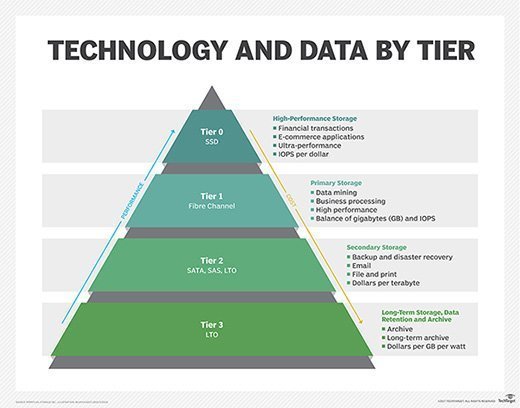
imtmphoto - Fotolia
Three solid-state storage advantages that boost HCI performance
There are many advantages to including solid-state storage in your hyper-converged infrastructure plans, such as better performance and lower power costs.
Over the last few years, hyper-converged systems have gained significant traction in the data center and in branch offices. A hyper-converged platform, however, is only as good as the underlying hardware. This is especially true for storage, and hyper-converged infrastructure systems can benefit from solid-state storage advantages.
Solid-state drives have long been an option in hyper-converged platforms, but some organizations are reluctant to use them because of concerns about cost or hardware longevity. Over time, however, SSD costs have decreased, and enterprise-grade SSD life spans now rival those of spinning media.
Improved virtual machine density
One of the greatest solid-state storage advantages in hyper-converged systems is the potential to improve virtual machine density -- the number of VMs that can run on a host cluster. Because the server runs multiple virtual machines simultaneously, the hardware costs can be divided among the VMs to establish a virtual machine cost. As the number of virtual machines on a hardware platform increases, the cost per virtual machine decreases, because each VM uses a smaller percentage of the hardware resources.
The availability of storage IOPS is often the limiting factor that determines how many VMs the platform can run on hyper-converged systems. Using SSDs can greatly increase the IOPS capacity, thereby also increasing the potential VM density and bringing down the cost of each virtual machine.
Lower power and cooling costs
Using SSDs in your hyper-converged infrastructure can also reduce your data center's power and cooling costs.
Traditional hard disk drives have moving parts and require a considerable amount of power to spin the drive's motors. This rotational motion also results in friction, which generates heat.
In contrast, one of the many solid-state storage advantages is SSDs do not have any moving parts. They consume a small fraction of the power that HDDs do, and SSDs do not usually produce a significant amount of heat.
Better overall performance
Another of the solid-state storage advantages is the speed of SSDs compared to HDDs. Although there are some enterprise-class HDDs that can deliver near-SSD performance for linear operations, SSDs far outperform HDDs when it comes to random I/O performance.
Most hyper-converged platforms support tiered storage in a hybrid setup. That works by using SSDs in a performance tier and HDDs in a capacity tier. It allows SSDs to handle applications with performance needs and cheaper HDDs to handle less frequently accessed data.

This approach allows the hyper-converged platform to deliver near-all-SSD performance, because the data that is being actively used resides on SSD storage, while the inactive data resides on less expensive, higher-capacity HDD storage.
While there are tradeoffs in cost and capacity, the many solid-state storage advantages make it clear that SSDs can be the key to getting the maximum benefit from a hyper-converged platform.








